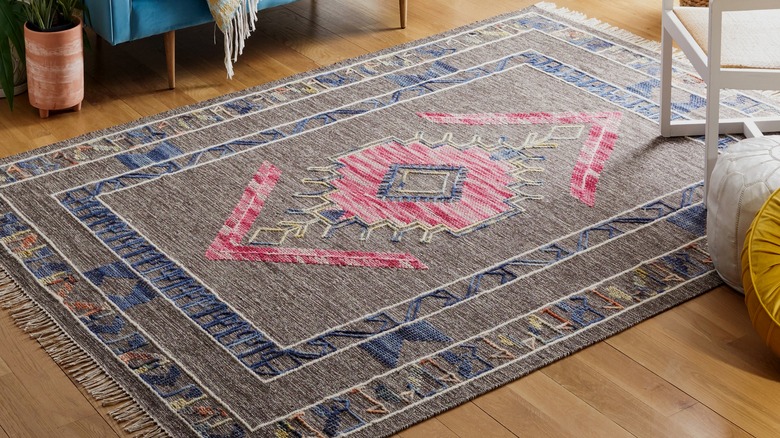Expert Designer Suggests A Unique Spot For Your Wool Rug
Design projects, whether you're putting together your home for the first time or refreshing an area with new energy, can be thrilling. You're calculating how to best leverage the room size and available natural light, and figuring out how to balance utility with charm. Furniture choices, paint color, and rugs all work together to instantly alter the vibe of a room. Because our bathrooms are usually small, we need to think extra creatively to elevate the design of such a practical space. Interior designer Sarah Gibson has a bold suggestion — get a wool rug in your bathroom, stat.
You might be wondering if that's such a good idea. After all, bathrooms typically maintain a tropical climate. Humidity and wetness increase with every shower, affecting all the surfaces in the room, including whatever's on the floor. Wool rugs do have some drawbacks, but read on to hear from an expert who grew up on a sheep farm, spinning their wool and gaining invaluable knowledge.
How to make a wool rug work in the bathroom
If this idea excites you, the first thing you want to think about is room dimension in order to size the rug properly, and then germs, of which there is no shortage in a bathroom. For hopefully obvious reasons, we recommend never placing a wool rug right in front of the toilet, but the perfect location is right below the counter and sink area. Also, practically speaking, most bathroom floors are slippery. If your wool rug doesn't have an elasticized backing, consider using a rug pad underneath it to prevent falls.
We love Sarah Gibson's expertise in this area and her reasons for favoring wool despite a bathroom's moisture levels. Before becoming a designer and touring manufacturing and textile plants, she sheared her family's sheep as a youngster and learned a great deal about the properties of wool and what it can withstand. She's never had mold or mildew problems with her bathroom wool rugs.
On her Room for Tuesday blog, Gibson writes, "Wool is naturally a moisture-wicking material. It will actually remain dry to the touch and wicks moisture OUT through small fibers. Wool also allows better airflow in comparison to many other natural materials, which is why it can handle moisture well." She adds, "As a material, it is less sensitive to temperature and humidity changes too!" For tips on care, here's how often you should be cleaning your rugs.
